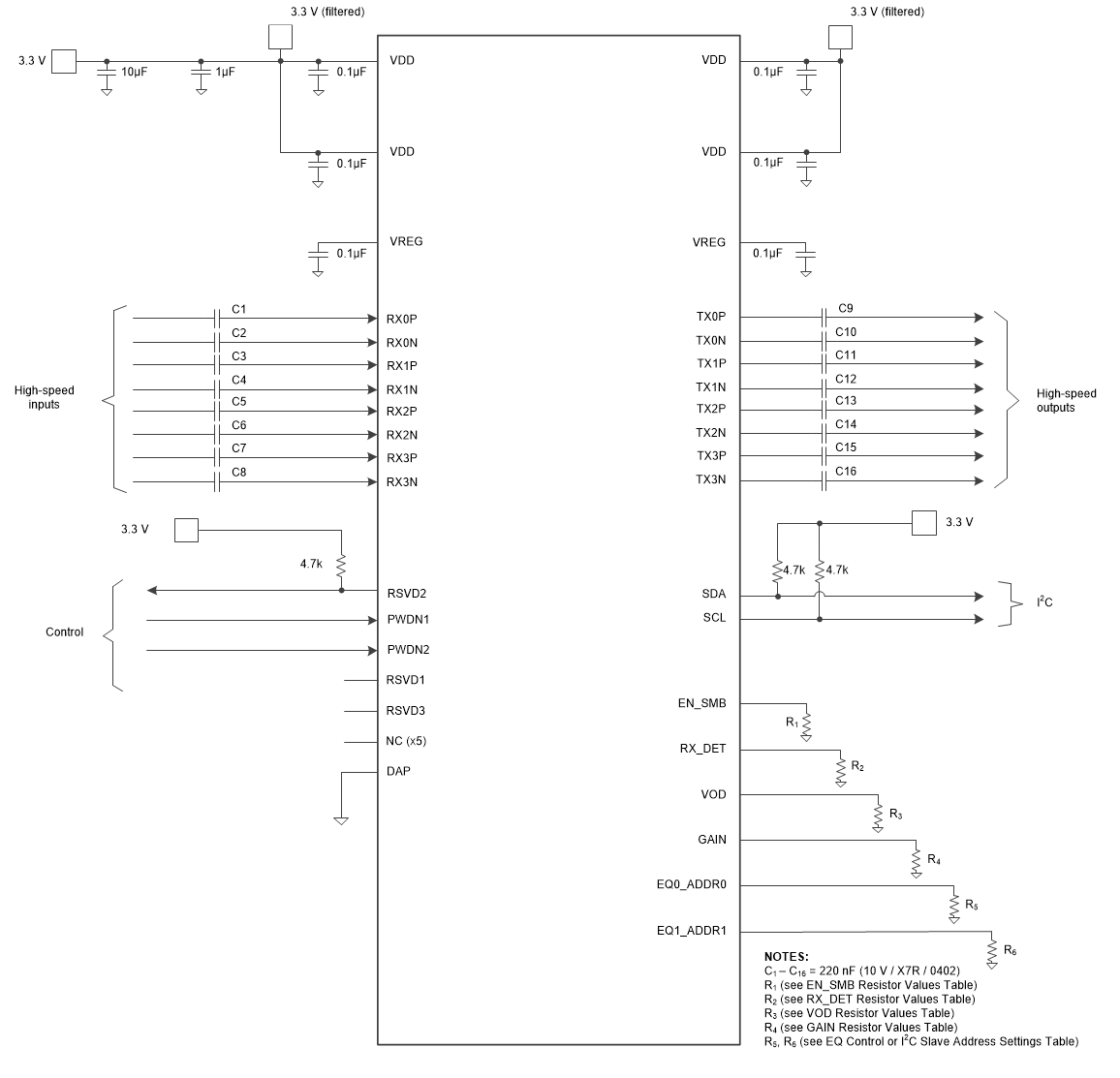SNLS666 January 2020 SN75LVPE4410
PRODUCTION DATA.
- 1 Features
- 2 Applications
- 3 Description
- 4 Revision History
- 5 Pin Configuration and Functions
- 6 Specifications
- 7 Detailed Description
- 8 Application and Implementation
- 9 Power Supply Recommendations
- 10Layout
- 11Device and Documentation Support
- 12Mechanical, Packaging, and Orderable Information
8.2.1.2 Detailed Design Procedure
In PCIe Gen 4.0 and Gen 3.0 applications, the specification requires Rx-Tx link training to establish and optimize signal conditioning settings at 16 Gbps and 8 Gbps, respectively. In link training, the Rx partner requests a series of FIR – pre-shoot and de-emphasis coefficients (10 Presets) from the Tx partner. The Rx partner includes 7-levels (6 dB to 12 dB) of CTLE followed by a single tap DFE. The link training would pre-condition the signal, with an equalized link between the root-complex and endpoint.
Note that there is no link training in PCIe Gen 1.0 (2.5 Gbps) or PCIe Gen 2.0 (5.0 Gbps) applications. The SN75LVPE4410 is placed in between the Tx and Rx. It helps extend the PCB trace reach distance by boosting the attenuated signals with its equalization, which allows the user to recover the signal by the downstream Rx more easily.
For operation in Gen 4.0 and Gen 3.0 links, the SN75LVPE4410 transmit outputs are designed to pass the Tx Preset signaling onto the Rx for the PCIe Gen 4.0 or Gen 3.0 link to train and optimize the equalization settings. The suggested setting for the SN75LVPE4410 are VOD = 0 dB and DC GAIN = 0 dB. Adjustments to the EQ setting should be performed based on the channel loss to optimize the eye opening in the Rx partner. The available EQ gain settings are provided in Table 1.
The Tx equalization presets or CTLE and DFE coefficients in the Rx can also be adjusted to further improve the eye opening.
Figure 10 shows as an example for SN75LVPE4410 Typical Connection Schematic.
 Figure 10. SN75LVPE4410 Typical Connection Schematic
Figure 10. SN75LVPE4410 Typical Connection Schematic